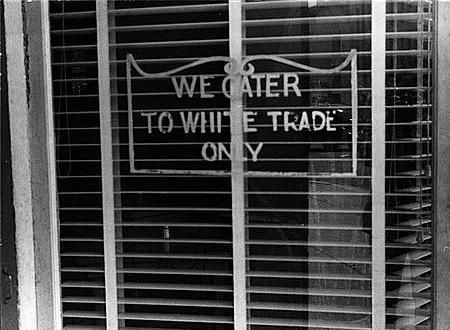Nashville Sit Ins
The Nashville sit-ins of 1960 were one of the most successful student-directed protests of the Civil Rights era. Tutored in the importance of non-violence by James lawson - a tactician of nonviolent protest - the students deployed demonstrators to stage sit-ins at many of Nashville’s restaurants. These demonstrations would inspire the non-violent protests of the Southern Christian Leadership Council. As a result of the sit-ins and a subsequent march on City Hall, on 20 May 1960 the mayor announced plans to desegregate Nashville.
The students had the same objectives as those in Greensboro - they were protesting against segregation.
The Nashville sit-ins were launched on 6 February 1960. The students marched to the lunch counters in downtown department stores and waited to be served. Although African Americans were invited to spend money at these stores, they were banned from eating at their lunch counters.
Other students began to join the protest and the number of demonstrators gradually increased. However, the organisers were worried that not everybody who had joined would abide by the policy of non-violence because they had not been taught the necessary tactics. To get round this problem, student John Lewis and Bernard LaFayette wrote a pamphlet outlining rules for those on the march.

The hand-outs made it clear that the demonstrators must not strike back or curse is they are physically or verbally abused. They also had to be polite and friendly at all times and sit with a straight back. Most importantly they must follow the teachings of Jesus Christ, Martin Luther King and Mahatma Ghandi.
The first two weeks of the protest saw little violence. A stand-off had emerged between the store managers and the students. However, on 26 February the Nashville Chief of police announced threatened more aggressive action. As the students walked to the stores they were assaulted by racist white youths.
Violence got worse on 27 February and police arrested 81 students for ‘disorderly conduct’.
Thethreat of imprisonment emboldened the demonstrators and they gained more support from those horrified by their treatment. As support grew, so did the demonstration, and in April that sit-ins were expanded to include boycotts of all pro-segregation downtown businesses in Nashville. A reported 98 per cent of African Americans in Nashville took part in the boycott.
On 19 April 1960, in protest of a bomb attack on Alexander Looby, a black lawyer who had defended many of the demonstrators, about 4,000 students marched to Nashville’s City Hall where the leaders met with Ben West - the city’s mayor. West admitted that segregation was unacceptable and announced plans to desegregate Nashville. Only a few weeks later, six lunch counters in Nashville desegregated their counters.
The Student Non-violent Co-ordinating Committee (SNCC) was formed shortly after the sit-ins. John Lewis became its leader and Diane Nash a full-time SNCC field worker.
The influence of the Nashville sit-ins cannot be underestimated. Along with the protests at Greensboro, the nonviolent sit-ins led the wave of direct-action protests of the early 1960s. It showed the importance of tightly organised, well-publicised, non-violent demonstrations.
See also: Greensboro 1960
MLA Citation/Reference
"Nashville Sit Ins". HistoryLearning.com. 2025. Web.
